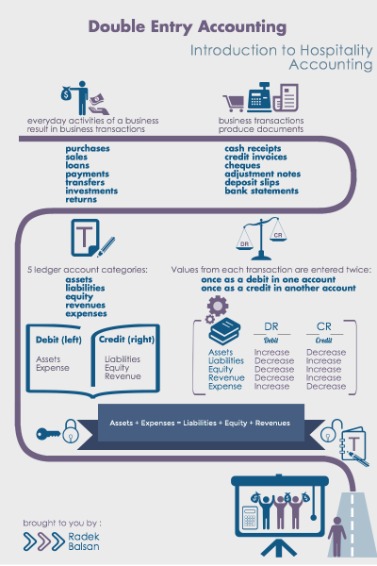Content

In corporations, this entry closes any dividend accounts to the retained earnings account. For purposes of illustration, closing entries for the Greener Landscape Group follow. Clear the balance of the expense accounts by debiting income summary and crediting the corresponding depreciation closing entry expenses. Closing the Income Summary Account Assuming that total revenues were $10,400 and total expenses were $6,000, prepare the entry in journal form to close the Income Summary account to the R. A depreciation expense account has a normal debit balance.

This includes the purchase price, plus any shipping, taxes. Installation, or customization costs you pay to get that item ready for use. “Depreciation account” is debited to record its journal entry. As a result of this method, the asset can be shown at its original cost, and the provision for depreciation can be shown on the liabilities side. Printing Plus has a $4,665 credit balance in its Income Summary account before closing, so it will debit Income Summary and credit Retained Earnings.
Introduction to the Closing Entries
Some assets return value after their service life, such as with car trade-ins, while some companies use other assets until they are worthless. Operating assets allow an organization to function daily and thereby make money or create other outputs. These assets can include buildings, cash, copyrights, equipment, goodwill and more.
- The historical cost of a fixed asset is needed for a number of reasons, such as computing depreciation using the fixed installment method or the payment of rates and taxes.
- Over time, the net book value of an asset will decrease until its salvage value is reached.
- If an asset can return some gain at the end of its service life, determine the depreciation on cost minus the estimated salvage value.
- Accumulated depreciation is recorded as a contra asset via the credit portion of a journal entry.
- For example, make a credit in the asset’s ledger account and a debit in the Accumulated Depreciation ledger account.
- Over time, the accumulated depreciation balance will continue to increase as more depreciation is added to it, until such time as it equals the original cost of the asset.
Anything under construction exists in an accumulation account (for example, Construction-in-Process) until the work is complete. Upon completion, an accountant will move the asset to the appropriate fixed-asset account. We have completed the first two columns and now we have the final column which represents the closing process. Temporary accounts that close each cycle include revenue, expense, and dividends accounts.
Determine the Gain or Loss
These methods are allowable under Generally Accepted Accounting Principles . A company may select the depreciation method they wish to use. Accumulated depreciation is dependent on salvage value; salvage value is determined as the amount a company may expect to receive in exchange for selling an asset at the end of its useful life. Accumulated depreciation is the sum of all recorded depreciation on an asset to a specific date. David Kindness is a Certified Public Accountant and an expert in the fields of financial accounting, corporate and individual tax planning and preparation, and investing and retirement planning.
If you are accounting for the depreciation of an asset, record it as a debit to the Depreciation Expense account. When depreciating an asset, you must know the cost of the asset , the useful life of the asset , the salvage value and the depreciation method . Under the sum-of-the-years’ digits method, a company strives to record more depreciation earlier in the life of an asset and less in the later years. This is done by adding up the digits of the useful years, then depreciating based on that number of year. Under the double-declining balance , a company calculates what it’s depreciation would be under the straight-line method.
AccountingTools
To be considered one fixed asset, items must share an asset group, acquisition date and an acquisition cost. Also called writing down, represents the period during which the market value of an asset is less than the valuation entered on an organization’s balance sheet. These assets do not support daily business operations, but they can help to generate revenue. Such assets include interest from certificates of deposit, short-term investments and vacant land that will appreciate. It also helps us to ascertain the net income of the present accounting period. In this topic, you will learn how to run the depreciation close process and review the accounting entries generated during processing.
To get a zero balance in an expense account, the entry will show a credit to expenses and a debit to Income Summary. The closing entry will credit Supplies Expense, Depreciation Expense–Equipment, Salaries Expense, and Utility Expense, and debit Income Summary. This is no different from what will happen to a company at the end of an accounting period. A company will see its revenue and expense accounts set back to zero, but its assets and liabilities will maintain a balance.
Accumulated depreciation is the result of recording monthly or annual depreciation expense and depends entirely on the amount of depreciation being calculated on individual assets. The tax methods allowed by the IRS are different than the accounting methods for accumulated depreciation. When filing, make sure you are following the regulations and directions set forth by the IRS. Depreciation is an accounting method of allocating the cost of a tangible asset over its useful life to account for declines in value over time.
There is a common misconception that depreciation is a method of expensing a capitalized asset over a while. Every accounting specialty has unique considerations. Fixed assets usually form a substantial investment for an organization, and each asset can include many components requiring special attention. If your organization builds an asset and you borrowed money to pay for the work, the cost comprises all components, including materials, labor, overhead and any interest expense.
Creating Provisions for Depreciation
What are your total expenses for rent, electricity, cable and internet, gas, and food for the current year? You have also not incurred any expenses yet for rent, electricity, cable, internet, gas or food. This means that the current balance of these accounts is zero, because they were closed on December 31, 2018, to complete the annual accounting period. As Cornell Law School explains, they generally provide a long life but also depreciate in value over a period of time. They help the company to generate revenue, so these long-term assets are accounted for as capital accounts rather than revenue accounts.
Is depreciation expense closed in the closing process?
Depreciation expense is closed at the end of the accounting period. A depreciation expense is a nominal account and must be closed to retained earnings at the end of the period. Other choices are permanent accounts.
Does Accumulated depreciation go on closing entry?
Accumulated Depreciation which is a balance sheet contra asset account and its balance is not closed at the end of each accounting period. As a result, Accumulated Depreciation is viewed as a permanent account.
